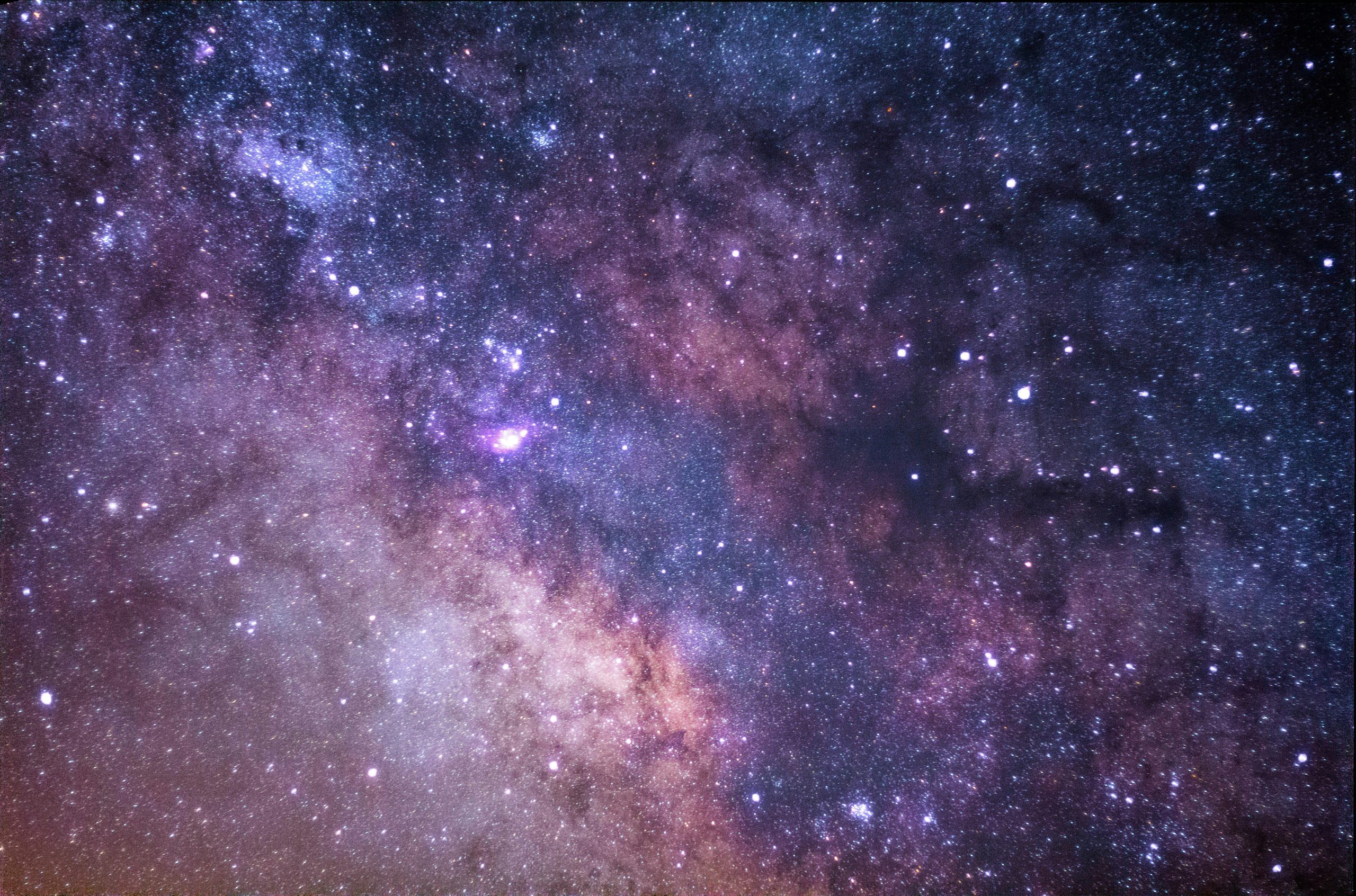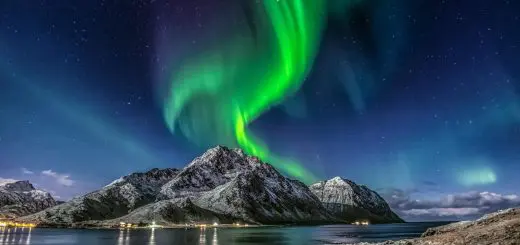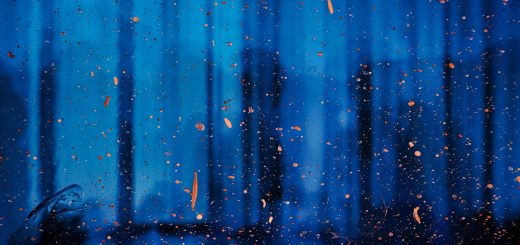Why Was the Renaissance a Turning Point in History?

Looking for more amazing products? Check out our online store and explore our collection here! Happy shopping!
Before diving in, please note: This post is for informational purposes only. If you’d like to know more about how we approach topics, feel free to check out our friendly Disclaimer Page.
Hey there, amazing readers! 
We’re committed to delivering quality posts, and your support (even just sticking around despite the ads) means everything to us. So, bear with us, and thanks for helping us keep the good vibes rolling. Now, on to the fun stuff!
TRANSLATE BUTTON AT THE END OF THE ARTICLE
A Quick Overview
The Renaissance was a phenomenal period that transformed Europe and laid the groundwork for modern society.
Spanning roughly from the 14th to the 17th century, it marked a vibrant cultural movement fueled by a revival of interest in classical antiquity.
It was a time of innovation, creativity, and exploration, with profound impacts on art, science, philosophy, and politics.
So why was the Renaissance a turning point in history?
Let’s dive into the details!
The Renaissance: A Blossoming of Creativity and Ideas
The Renaissance was like a breath of fresh air after the somber Middle Ages.
Imagine a time when creativity flourished and ideas danced in the air.
Artists, thinkers, and innovators began to emerge from the shadows of medieval constraints, eager to express themselves.
The term "Renaissance" itself means "rebirth." It was a rebirth not only of art and literature but of human potential.
People started to value individualism and personal achievement.
This new outlook encouraged experimentation and artistic expression.
Think of it as shaking off the cobwebs and stepping into a sunlit meadow filled with vibrant flowers.
People began to ask questions.
What makes us human?
What is our place in the universe?
This thirst for knowledge sparked explorations in various fields, transforming how society viewed itself.
The Renaissance wasn’t just confined to Italy; it was like a wildfire spreading across Europe.
Each region added its own flavor, creating a tapestry of ideas and creativity.
The result?
A profound shift in how humans engaged with their world.
This period laid the foundations for the emergence of the modern age.
A new chapter in human history was beckoning, and the Renaissance was just the beginning.
Rediscovering Classical Knowledge: A Golden Revival
One of the most fascinating aspects of the Renaissance was its connection to antiquity.
Scholars and artists turned to the works of ancient Greece and Rome, dusting off texts that had been neglected for centuries.
They didn’t just mimic these works; they analyzed, critiqued, and built upon them.
Humanists played a key role in this revival.
These scholars believed in the value of classical education and sought to apply ancient wisdom to contemporary life.
They studied rhetoric, philosophy, and poetry, bringing alive the ideas of Socrates, Plato, and Aristotle.
This rediscovery had a profound impact on various disciplines.
In philosophy, for example, thinkers like Erasmus and Thomas More drew on classical ideas to discuss ethics and society.
In art, artists like Botticelli and Michelangelo drew inspiration from classical forms and subjects, producing breathtaking works that conveyed human emotion and beauty.
The Renaissance sparked a new appreciation for human achievement.
People began to believe in the potential of human reasoning and creativity.
Knowledge was no longer solely the domain of the clergy; it became accessible to the wider population, planting the seeds for educational reforms that would flourish in later centuries.
Art and Innovation: The Masters Who Shaped a Culture
Renaissance art is perhaps the most recognized and celebrated aspect of this period.
It was a golden age for artists who pushed boundaries and redefined what art could be.
Figures like Leonardo da Vinci, Raphael, and Michelangelo became household names, and their works still resonate today.
Leonardo da Vinci wasn’t just an artist; he was a true polymath.
His notebooks reveal a mind brimming with curiosity, filled with sketches of inventions, anatomical studies, and observations of nature.
He combined art with science, creating masterpieces like the "Mona Lisa" that conveyed emotions in a way never seen before.
Raphael, with his serene compositions, captured beauty and harmony.
His works, like "The School of Athens," showcased not just artistic skills but also philosophical themes, blending the old and new seamlessly.
Michelangelo, on the other hand, was a powerhouse of creativity.
His sculptures, such as "David," displayed the human form in stunning detail.
His work on the Sistine Chapel ceiling is a testament to his genius and ambition.
Each brushstroke told a story, breathing life into biblical narratives.
These artists didn’t just create beautiful works; they inspired future generations.
Their innovations in technique, perspective, and composition forged a path for future artists.
The Renaissance was a time when art became a powerful medium for expressing complex ideas, emotions, and the human experience.
Shifting Worldviews: From Faith to Humanism and Reason
The Renaissance marked a significant shift in worldviews, moving from a predominantly religious perspective to one that embraced humanism and reason.
In the Middle Ages, life revolved around the Church, and faith dictated daily existence.
However, during the Renaissance, individuals began to explore their own identities and capabilities.
Humanism, the philosophical backbone of the Renaissance, emphasized the importance of human values and experiences.
Thinkers started to argue that humans could shape their own destinies.
This was a radical departure from the idea that divine intervention was the primary force in human affairs.
This shift was not without its challenges.
It led to questioning established norms and even authority.
The focus on individual thought encouraged people to scrutinize religious doctrines and practices.
This questioning spirit laid the groundwork for the Reformation and the emergence of various religious movements.
As humanity began to place more emphasis on reason and observation, scientific inquiry flourished.
Natural phenomena became subjects of study rather than miraculous occurrences.
This was a time when curiosity was celebrated, and the pursuit of knowledge became a noble endeavor.
In essence, the Renaissance fostered an environment where people dared to think critically and independently.
This shift in perspective not only transformed individuals but also had widespread implications for society as a whole.
The Birth of Modern Science: Curiosity Ignited
The Renaissance ignited a flame of curiosity that would lead to the birth of modern science.
While the Middle Ages focused on theology and philosophy, the Renaissance shifted the spotlight to observation and experimentation.
Think of it as moving from storytelling to conducting experiments in a lab.
Pioneers like Galileo Galilei and Nicolaus Copernicus laid the groundwork for a new understanding of the universe.
Copernicus proposed a heliocentric model, challenging the long-held belief that the Earth was the center of the universe.
Galileo took this further by using a telescope to observe celestial bodies, capturing the imagination of both scientists and the public.
The scientific method began to take shape during this period.
It became a systematic way to investigate the natural world.
Questions were posed, hypotheses formed, experiments conducted, and conclusions drawn.
This method became the hallmark of scientific inquiry and has persisted to this day.
The Renaissance also saw the emergence of fields like anatomy, astronomy, and physics.
Figures like Andreas Vesalius revolutionized anatomy through detailed studies of the human body, while others explored the principles of gravity and motion.
This thirst for knowledge pushed the boundaries of what was known.
Each discovery opened doors to more questions.
The Renaissance era was a catalyst for future scientific revolutions, bridging the gap between ancient knowledge and modern scientific thought.
Literature Flourishes: Voices That Changed Perspectives
Literature experienced a renaissance of its own during this period.
Writers began to explore themes that reflected the human experience, rather than solely focusing on religious narratives.
The result was a rich tapestry of literary works that shaped thought and culture.
Dante Alighieri’s "Divine Comedy" broke new ground, blending personal experience with philosophical exploration.
Chaucer’s "Canterbury Tales" provided a glimpse into medieval life, using humor and satire to critique society.
These works laid the foundation for future literature, inspiring generations of writers.
The Renaissance also saw the rise of playwrights like William Shakespeare.
His plays delved into the complexities of human emotions, relationships, and morality.
Shakespeare’s ability to capture the human experience in a relatable way made him a timeless figure.
We still quote him today!
This era was characterized by the use of vernacular language, making literature accessible to the masses.
No longer confined to Latin, writers began to use the languages spoken by everyday people.
This shift democratized literature and allowed diverse voices to emerge.
Through literature, ideas about human nature, society, and morality were explored like never before.
It wasn’t just about telling stories; it was about reflecting the complexities of life.
The Renaissance forged connections between individuals and their shared experiences, enriching the cultural fabric of society.
The Printing Press: Spreading Knowledge Like Wildfire
The invention of the printing press by Johannes Gutenberg in the mid-15th century was nothing short of revolutionary.
It was as if a light bulb went off, illuminating the path to widespread knowledge.
With this invention, books could be produced quickly and in large quantities, making them more affordable and accessible.
Before the printing press, books were painstakingly copied by hand, making them rare and expensive treasures.
The printing press changed all that.
Knowledge began to spread like wildfire, and literacy rates soared.
Imagine a world where ideas could travel faster than ever before!
This new technology allowed for the dissemination of not just religious texts but also scientific works, literary classics, and new ideas.
The works of Renaissance thinkers, scientists, and artists were quickly printed and circulated, fostering dialogue and debate.
The printing press also played a crucial role in the Reformation.
Martin Luther’s 95 Theses, which critiqued the Catholic Church, spread rapidly thanks to printed pamphlets.
This accessibility empowered individuals to question authority and engage in discussions about faith and morality.
The ability to reproduce texts led to a sharing of ideas across borders, cultures, and languages.
It was a democratization of knowledge that changed how people viewed the world around them.
The printing press was indeed a game-changer, paving the way for the Enlightenment and beyond.
Political Transformations: Rise of Nation-States
The Renaissance also influenced the political landscape of Europe.
As people began to embrace individualism and question authority, the feudal system that dominated the Middle Ages started to give way to the rise of nation-states.
Leaders began to centralize power, moving away from decentralized feudal governance.
The emergence of strong national identities encouraged the formation of centralized governments.
This shift laid the groundwork for modern political structures.
Italy, for example, was a tapestry of city-states, each competing for power and influence.
The Medici family in Florence showcased how wealth could translate into political power.
Their influence extended beyond finance and into art, culture, and politics.
They became patrons of artists and thinkers, shaping the Renaissance itself.
As nation-states emerged, diplomacy became important.
The interactions between states fostered a spirit of competition and collaboration.
This new political climate set the stage for future conflicts and alliances that would shape European history.
The Renaissance’s impact on politics was profound.
It encouraged a new understanding of governance, where the focus shifted from divine right to the will of the people.
This evolution in political thought would echo through history, influencing democratic ideals and revolutions for centuries to come.
Economic Change: Trade Routes and New Opportunities
The Renaissance was not just a cultural and intellectual awakening; it was also an economic revolution.
Trade routes expanded, connecting Europe with Asia, Africa, and the Americas.
This new interconnectedness opened up opportunities for commerce and exchange.
Venice and Genoa became bustling trade hubs, facilitating the flow of goods, ideas, and culture.
The wealth generated from trade fueled artistic and intellectual pursuits.
Think of the Renaissance as an economic engine that powered creativity.
Exploration also played a crucial role in this economic transformation.
Figures like Christopher Columbus and Vasco da Gama ventured into the unknown, seeking new trade routes.
Their discoveries reshaped the global economy, introducing new goods, ideas, and cultures to Europe.
Alongside the rise of trade was the emergence of a new social class: the merchant class.
This group amassed wealth and influence, challenging the traditional aristocracy.
Their newfound power contributed to the cultural flourishing of the Renaissance.
The economic changes during this period were significant.
They laid the groundwork for capitalism, emphasizing trade, competition, and innovation.
The Renaissance was a period where economic and cultural progress went hand in hand, shaping the future of Europe.
The Role of Patrons: Who Funded the Greats?
Behind every masterpiece, there are often patrons who believed in the potential of artists and thinkers.
The Renaissance saw the rise of wealthy individuals and families who funded artistic and intellectual endeavors.
Think of them as the original sponsors of creativity.
The Medici family in Florence is perhaps the most famous example.
They opened their wallets to support artists like Michelangelo and Botticelli.
Their patronage allowed these geniuses to focus on their work without worrying about financial constraints.
Patrons played a crucial role in shaping the cultural landscape.
Their support not only provided artists with the means to create but also established networks of influence.
Artists often competed for the favor of patrons, driving them to push their boundaries and innovate.
But it wasn’t just the Medici.
Numerous other families and individuals across Europe contributed to the flourishing of the arts.
This culture of patronage fostered a sense of community among artists and thinkers, creating an environment that nurtured creativity.
Patrons also sought to enhance their own status by associating with great works of art.
It was a win-win situation: artists gained financial support, while patrons enjoyed the prestige of being associated with brilliance.
The Renaissance was, in many ways, a collaborative effort driven by shared passions and pursuits.
Women in the Renaissance: Emerging Influences
While the Renaissance is often portrayed as a male-dominated era, women also played significant roles, albeit often overlooked.
The period saw the emergence of influential women who made their mark in various fields, challenging traditional gender roles.
Women like Isabella d’Este, a prominent patron of the arts, wielded considerable influence in the cultural landscape.
She supported artists and intellectuals, contributing to the flourishing of Renaissance culture.
Her court became a hub of creativity and innovation.
In literature, figures like Christine de Pizan broke new ground by addressing issues of gender and women’s rights.
Her writings challenged prevailing notions about women’s roles in society, advocating for their education and empowerment.
Artists like Sofonisba Anguissola defied conventions by gaining recognition for their talents.
She became a court painter and was celebrated for her portraits.
Her success paved the way for future female artists, proving that talent knows no gender.
Despite societal constraints, women found ways to assert their influence and creativity.
They participated in intellectual salons, contributed to literature, and supported the arts.
Their contributions deserve recognition, as they enriched the cultural tapestry of the Renaissance.
The legacy of these women continues to inspire.
They showed that the Renaissance was not solely a male endeavor but a collaborative movement that included voices from all walks of life.
Lasting Legacy: How the Renaissance Shaped Our World
The impact of the Renaissance reverberates through history, shaping our modern world in profound ways.
It laid the foundations for scientific inquiry, artistic expression, and humanistic thought.
The ideas and innovations of this period continue to influence various aspects of our lives today.
Education underwent a transformation, moving towards a more inclusive model that emphasized critical thinking and exploration.
The pursuit of knowledge became a lifelong endeavor, inspiring generations of learners to seek understanding and enlightenment.
Art and literature flourished, giving rise to iconic works that are still celebrated today.
The techniques developed during the Renaissance continue to inspire artists, while writers explore themes rooted in the human experience.
The political landscape evolved, with the rise of democracy and the questioning of authority.
The Renaissance encouraged people to engage in political discourse and seek a voice in governance—a legacy that resonates in contemporary democratic movements.
Moreover, the spirit of exploration initiated during the Renaissance sparked global interactions that reshaped cultures and economies.
The quest for knowledge and discovery remains a driving force in our interconnected world.
Ultimately, the Renaissance was a turning point in history that transformed how we view ourselves, our society, and our potential.
It was a celebration of human creativity, curiosity, and resilience.
And through it all, we continue to learn, grow, and evolve, building on the rich legacy of this remarkable era.
Conclusion
The Renaissance was more than just a moment in time; it was a monumental turning point in history.
It fostered an environment where creativity and inquiry thrived, allowing individuals to explore their potential and challenge conventions.
From art and literature to science and politics, the influence of the Renaissance is woven into the fabric of modern society.
As we look back on this incredible period, we can appreciate its lasting legacy.
The Renaissance reminds us of the power of curiosity, the importance of diverse voices, and the value of human creativity.
It’s a testament to what can happen when we dare to dream and strive for greatness.
So, let’s celebrate the spirit of the Renaissance and carry it forward into our own lives!

The Enlightenment Journey is a remarkable collection of writings authored by a distinguished group of experts in the fields of spirituality, new age, and esoteric knowledge.
This anthology features a diverse assembly of well-experienced authors who bring their profound insights and credible perspectives to the forefront.
Each contributor possesses a wealth of knowledge and wisdom, making them authorities in their respective domains.
Together, they offer readers a transformative journey into the realms of spiritual growth, self-discovery, and esoteric enlightenment.
The Enlightenment Journey is a testament to the collective expertise of these luminaries, providing readers with a rich tapestry of ideas and information to illuminate their spiritual path.
Our Diverse Expertise
While our primary focus is on spirituality and esotericism, we are equally passionate about exploring a wide range of other topics and niches 

To ensure we provide the most accurate and valuable insights, we collaborate with trusted experts in their respective domains 
Our blog originally focused on spirituality and metaphysics, but we’ve since expanded to cover a wide range of niches. Don’t worry—we continue to publish a lot of articles on spirituality! Frequently visit our blog to explore our diverse content and stay tuned for more insightful reads.
Hey there, amazing reader! 
Check out our store here and take a peek at some of our featured products below! Thanks for being awesome!











